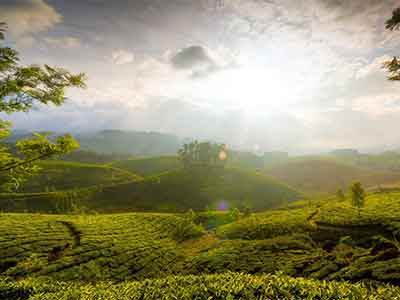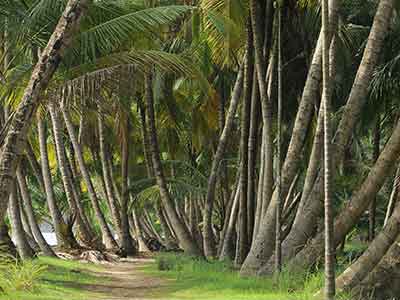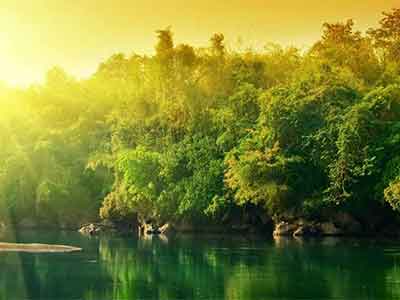Email: sales@travioholidays.in
Help: +91 98950 53303

The erstwhile French city and now the Indian Union Territory of Puducherry or Pondicherry appeals to different people on different levels. Some like to explore the famous Pondicherry Aurobindo ashram, founded by Sri Aurobindo and a famous Frenchwoman who came to be simply known as the “Mother”. It is famous for its meditation hall, its simple lifestyle, its pottery, handmade paper and other such crafts. It runs its own school and lives by its own philosophy.
Some prefer to wander along the perpendicular streets which remind them of Paris, lounging in the French style cafes, restaurants and hotels and pausing to admire the old French mansions of the French colonialists, who made the town their own, complete with policemen who still wear the smart French kepi or peaked cap.
And then there are those who prefer the Indian quarter – the racially named Ville Noire or Black Town which is separate from the French Quarter. Puducherry used to be part of the Pallava kingdom during the 4th century C.E., before others gained control of the territory. The Cholas of Thanjuvur, the Pandyas, the Sultanate of Madurai and the Vijaynagar empire all had their spans of rule in the region, before the Sultan of Bijapur assumed control in 1638 C.E.. In 1674 C.E., the French East India Company set up a trading post in Pondicherry but soon enough, there was a tussle for supremacy with the Dutch and the British. The town was captured by the Dutch and the British from time to time but treaties ensured its return to French hands. Some years after the Indian independence of 1947 from the British, the territory was ceded by the French to India and united with the Indian Union in 1962 – but has retained a special position as a specially administered Union Territory of India.
The Indian quarter of Puducherry boasts of large verandah lined homes with grilled windows and doors. Here, both languages – the native Tamil and French are spoken equally fluently. Signposts and menus are still printed in French in many parts of the city and there is an easy relationship with the French culture. The Pondicherry Museum is frequently visited and the beach remains a favourite with tourists and locals alike.
The Promenade

Promenade Beach or Pondicherry Beach on the Bay of Bengal, is 1.2 kms long, starting from the War Memorial and ending at Dupleix Park on Goubert Avenue. Like most tropical beaches, it is a favoured escape from the city.
Chidambaram

The more than 2000 years old rich, gold roofed temple with its glittering gopurams, the Thillai Nataraja temple in the ancient city of Chidambaram is indicative of the stupendous wealth of the Cholas and also speaks of their devotion to their god Shiva. The temple has enormous significance to the Hindu pilgrim because it is dedicated to Akasha or Space, one of the Pancha Bhoota or five elements that define the creation of the cosmos and its continued existence. The legendary idol captures the dance of Shiva – the Tandava – which, in Hindu mythology, depicts the birth of the universe – and therefore, addresses the element of Space.
A unique, dancing bronze idol of Shiva within is worshipped as the Lord of Dance or Nataraja. In one shrine inside the temple, Shiva is represented by empty space….and a garland of 51 leaves made of gold, strung together and hung in that space.
The temple in the heart of the Chidambaram township, is spread over 40 acres and is bordered by the second largest mangrove forests is the world, where the thillai trees, (which lend their name locally to the temple) of the Pichavaram wetlands grow. There are five main halls in the Nataraja temple, each with its own unique features. The Rajya Sabha in the Nataraja temple is 1000 pillared and the Chith Sabha that the Akashalingam, the Lingam of Space is worshipped. Shiva and Parvathi, his Consort, grace the sanctum sanctorum of the Kanaka Sabha. The Hall of Dance, the Nritya Sabha has 56 pillars displaying 108 dance postures of the dance form and has been conceptualized as a horse drawn chariot.
Supremely gifted craftsmen, the Perumthachan, designed and built the earliest structures of the temple. Although the main complex is dedicated to Shiva Nataraja, there are smaller shrines devoted to other deities such as Shivakami Amman, Ganesha, Murugan and also to the second major god of the sacred trinity, Vishnu, as Govindaraja Perumal. At a short distance from the Nataraja temple is an important Kali Amman temple, also built by the Chola King Kopperunjingan between AD 1229 and 1278.
Obviously the most important festivals here would be those dedicated to music and dance. And the Natyanjali Dance Festival is held annually in the month of February, during the Mahashivaratri festival for 5 days, where the most accomplished dancers vie with each other to perform in honour of the god, Nataraja. In 1929, Annamalai University was established in Chidambaram and it is considered one of the oldest and most distinguished universities in the country.
Kumabakonam

Kumbakonam takes its name from the kumbha, or pot, alluding to the mythical pot containing the seed of the entire universe, which came to rest after the dissolution of the universe, in the exact spot where the city stands.
This town, in the Thanjavur district, is bound by the Kaveri River to the north and Arasalar River to the south. Even in a state known for innumerable temples, Kumbakonam is known as a “temple town” for its plethora of temples and monasteries or mathas. Its Mahamaham festival, when pilgrims take a holy dip in the trapezoidal Mahamaham tank, attracts people from all over the globe.
Kumbakonam dates back to the Sangam period and was an important capital of the Medieval Chola dynasty between the 7th and 9th centuries AD. Interestingly, during the British Raj, it came to be known as the “Cambridge of South India” where European education was offered. As a place where European education and Hindu culture once rivalled each other, it offers an insight into the history of colonialism as well as the traditions of the region. After Tipu Sultan invaded it in 1784, Kumbakonam’s economy faltered and it was ceded to the British East India Company in 1799 by the Thanjavur Marath Serfoji II. However, almost a century later, in 1877, when railway lines linked the city with the maritime ports of Madras, Tuticorin and Nagapattinam, the city’s economy began to revive again and for a short period, a district court was even established there. Its real importance was recognized during the late 19th and early 20th century when it became a focal point of Brahmanism.
Our Top Tour Packages in South India
The four states that constitute South India are composed of distinctive geographic regions - narrow plains that fringe peninsular South India beside the Arabian Sea and the Bay of Bengal with two mountain ranges running alongside and the rocky hardtop of the Deccan and fertile central plains.










